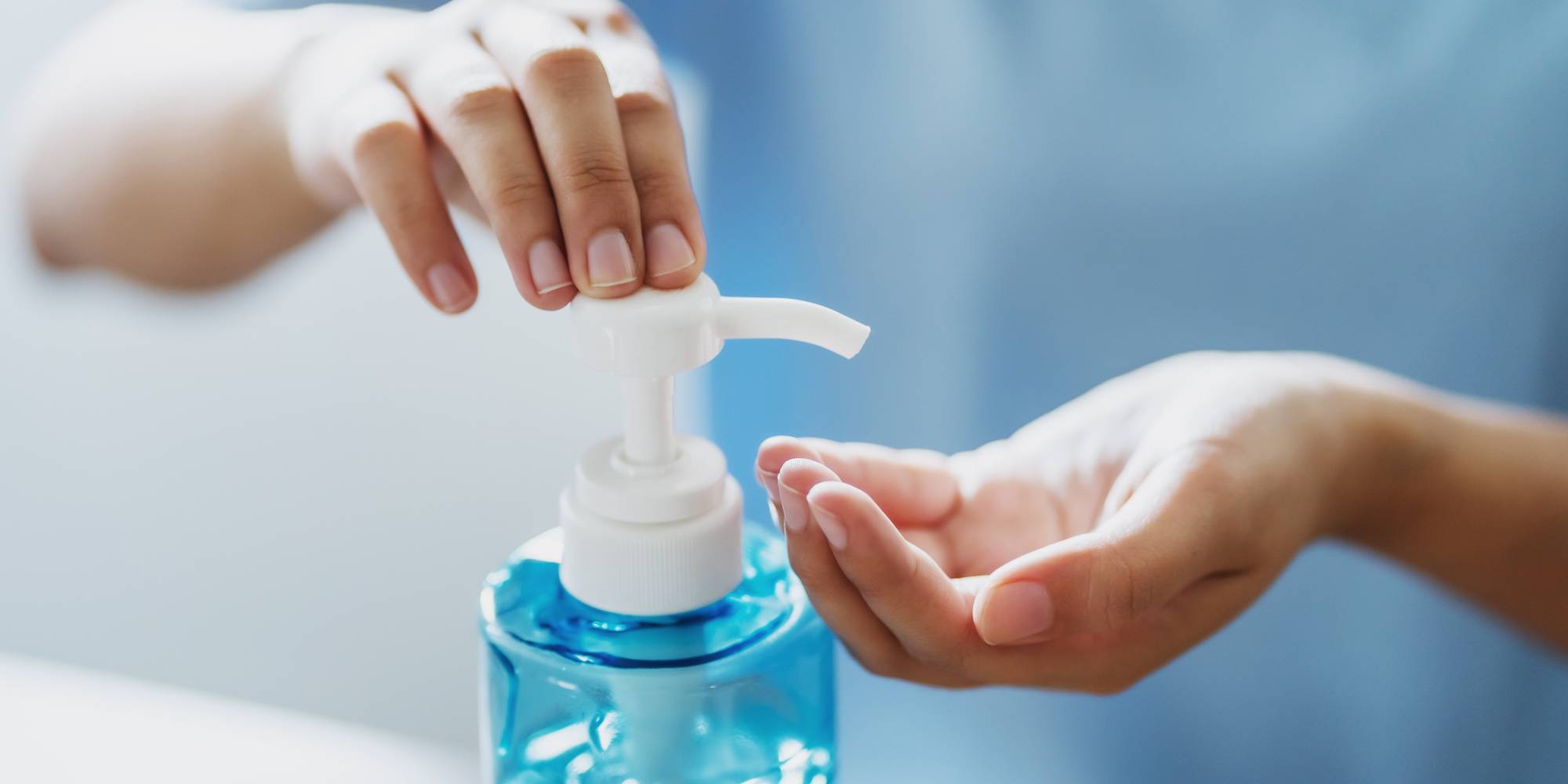Ethanol Use in Hand Sanitizers
By Jillian Jastrzembski
Hand sanitizers are everywhere – offices, gyms, clinics, shops, and pretty much every other public place you can think of. These disinfecting hand rubs offer many advantages to hand-washing. Hand sanitizers do not require running water, and can be used much more quickly and conveniently, which increases compliance.
The height of the pandemic saw a surge in research interest on hand sanitizers, as reducing the spread of germs became of critical importance. The increased demand led to a supply shortage, and researchers scrambled to validate the efficacy of new or less-used ingredients in mitigating viral spread. Ethanol is the principal active ingredient in many hand sanitizers.
Alcohol-based hand sanitizers
Hand sanitizers can be formulated in many different ways. Formulations include both alcohol-based and alcohol-free versions. There are two types of alcohols that are approved for use in hand sanitizers. They are ethanol, otherwise known as ethyl alcohol, and isopropanol, otherwise known as 2-propanol. Some hand sanitizers contain a mixture of the two, as well as other minor constituents.
Although strictly speaking the word alcohol refers to any chemical with an alcohol (hydroxyl, or -OH) functional group, if you see “alcohol-based” on the label for a hand sanitizer, it means the product is ethanol-based. This is meant to help eliminate ambiguity, since ethanol and alcohol are often used interchangeably in colloquial speech.
Comparison to alcohol-free sanitizers
Alcohol-based hand sanitizers are much more effective compared to alcohol-free versions. In lieu of alcohol, non-alcohol formulations contain quaternary ammonium compounds, or QACs. These work by adsorbing to the cytoplasmic membrane of microbes, to create a “leak” of constituents. Compared to alcohol-based versions, these alcohol-free formulations protect against a much smaller group of microbes.
Comparison to hand washing
Contrary to popular belief, hand sanitizers are actually less disruptive to the skin barrier compared to hand-washing detergents. In many cases, hand sanitizers are also more effective, and may eliminate additional pathways for reinfection. For example, hand sanitizers eliminate reinfection by contaminated water, or touching the taps and paper towel dispensers.
There are of course situations where hand washing is preferred, particularly for the removal of visible dirt or heavy metals.
Mechanism of action
Chemical alcohols, including both ethanol and isopropanol, share a mechanism for disinfection. These compounds act by denaturing proteins. In fact, alcohol, especially ethyl alcohol, has been used this way for hundreds of years – although the mechanism was not always known. For example, drinking fermented drinks was long known to be safer than water from a microbial standpoint. Ethanol could be added to food or herbs as a preservative. It would also have been used in a medical setting for disinfection.
Alcohol can inhibit growth of most bacteria, viruses, yeasts, and molds almost immediately upon contact. Regrowth of bacteria is also slowed immediately following alcohol application, thanks to residual presence of an unfriendly environment.
Many factors contribute to the efficacy of alcohol as a disinfectant, and must be taken into consideration in order to formulate effective products. These factors include:
- Type of alcohol
- Concentration
- Type of solution
- Volume applied
- Other ingredients in the formulation
- Whether the hands are wet or dry during application
Type of alcohol
Ethanol and isopropanol, though they share the disinfectant mechanism of protein denaturation, have slightly different efficacies. The efficacy of isopropanol at 60% is similar to the efficacy of ethanol at 80%. Ethanol is still generally preferred as the more familiar and less noxious ingredient.
Concentration of alcohol
There is a general misconception that the higher the concentration, the better. The truth is, the presence of water is absolutely necessary for protein denaturation to occur. In other words, pure alcohol is not effective as a disinfectant because it doesn’t have enough water. Besides that, high concentration alcohol evaporates too quickly to have a disinfecting effect. Conversely, too low a concentration is also ineffective, because the alcohol becomes too dilute.
Alcohol is most effective in the range of 60-95%. It is recommended that formulations be kept well within this range, around 80% for ethanol and 75% for isopropanol.
Type of solution
Alcohol-based hand sanitizers are sold as gels, foams, or liquids. Gels have been shown to be the least effective. However, when it comes to formulations, increasing compliance is weighted more important than optimizing efficacy. A gel sanitizer that is used more frequently is better than a foam or liquid sanitizer that is rarely used.
Volume applied
The ideal volume applied depends on the formula, but is generally around 3 mL.
Other ingredients in the formulation
Most formulations contain small amounts of other active ingredients, like antiseptics, as well as inactive ingredients that improve texture and compliance. Additional antiseptics are generally added in concentrations of less than 1% by volume.
Many formulations also include gelling agents, which increase the viscosity, moisturizers, or fragrances. All of these additions can play a role in increasing compliance.
Wet or dry hands
Applying hand sanitizer to wet hands essentially dilutes the product, which could make it less effective.
Conclusion
Ethanol is an important ingredient in the manufacture of hand sanitizers, thanks to the ability of ethanol to act as a disinfectant. Ethanol concentration is perhaps the most critical parameter for ethanol-based hand sanitizers, with 60-95% ethanol being the most effective disinfectant. Higher concentrations of ethanol are actually less effective, since water is required for protein denaturation and to slow down evaporation. Ethanol-based hand sanitizers are more effective than alcohol-free sanitizers, and even offer many advantages over hand washing with regular detergents.
References
Kumar, S., & Das, A. (2021). Hand sanitizers: Science and rationale. Indian Journal of Dermatology, Venereology and Leprology, 87(2), 309-314.
Lachenmeier, D. W. (2008). Safety evaluation of topical applications of ethanol on the skin and inside the oral cavity. Journal of Occupational Medicine and Toxicology, 3, 1-16.
Pendlington, R. U., Whittle, E., Robinson, J. A., & Howes, D. (2001). Fate of ethanol topically applied to skin. Food and Chemical Toxicology, 39(2), 169-174.
< Back


